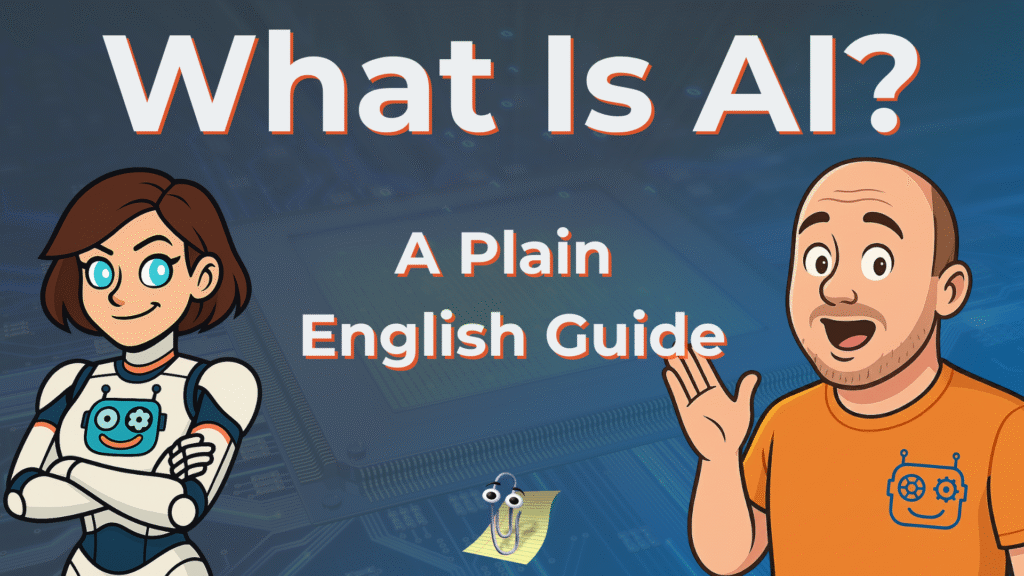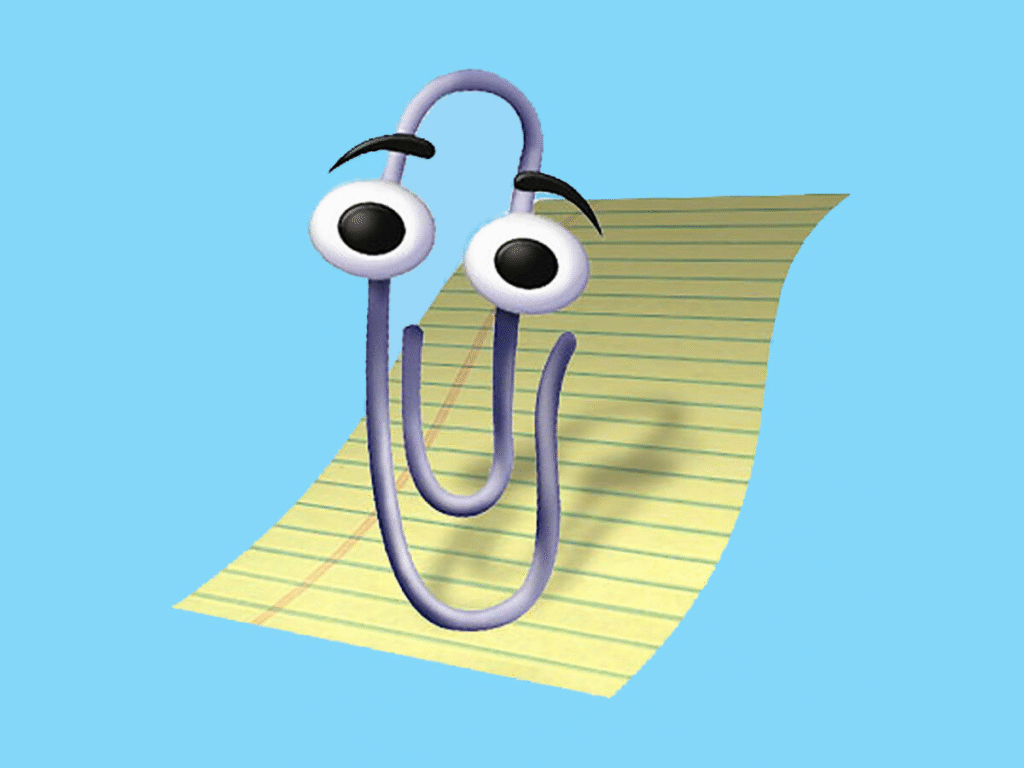Introduction
Picture this: it’s bedtime and your child suddenly asks, “Mum, how does Google know everything?” or “Dad, is Alexa a real person?” Kids have a knack for dropping big questions like these at the worst time (usually when you are desperate for them to sleep). If you’ve ever found yourself fumbling for an answer, you’re not alone. Artificial Intelligence can sound like a sci-fi concept best left to tech gurus. But, AI is already all around us in everyday life, quietly making our parenting and work tasks a bit easier.
In fact, research suggests 77% of devices we use have some form of AI in them, yet only about one-third of people realize they’re using AI at all. So what is AI, really, and why should busy parents care? Grab a cuppa and let’s have a friendly chat about what AI is and how it works, in plain English. (Don’t worry, we’ll sprinkle in some sports analogies and ’90s nostalgia to keep it fun.)

What Is It, Really? (Artificial Intelligence Explained)
Artificial Intelligence is basically a fancy term for technology that can mimic human intelligence – things like decision-making or problem-solving that we usually consider “smart” human tasks. If that sounds a bit abstract, think of it this way: AI is like a digital brain. It enables computers or gadgets to learn from experience, adapt to new information, and make decisions a bit like a human would. The goal is for AI to recognise patterns and make informed choices, often much faster (and more accurately) than we can. In practice, this means an AI can analyse huge amounts of data in seconds and come up with an answer or action. No magic, no little robot inside the machine, just algorithms and data doing the heavy lifting.
Sports Analogy
To put it in a sports analogy: imagine a football (soccer) coach who has watched every match in history. They instantly know which strategy might work against any opponent. AI acts like a super coach, processing vast amounts of data to determine the best course of action for any given task. It works tirelessly, crunching numbers all night without ever needing a coffee break
Everyday Applications
Importantly, AI isn’t one single thing or a specific gadget, it’s a broad field of computer science. It ranges from simple calculators and recipe suggestions to complex systems that drive cars. Most of the AI around us today is what experts call “narrow AI” (or “weak AI”): it’s really good at a specific task, but it doesn’t think or feel or do everything a human can.
For example, a chess AI can beat grandmasters at chess, but that same chess program can’t drive your car or help your kid with math homework. Siri or Alexa can fetch facts and play songs (thanks to narrow AI programming), but they have zero common sense – ask Alexa to do your kids’ homework and you’ll get a confused response, not a fully schooled child (we wish!). In short, AI today is like a star player specialised in one position. absolutely brilliant at that role, but not a jack-of-all-trades.
And guess what? You’ve been using AI on the daily. Ever typed a question into Google and got eerily spot-on suggestions before you even finished typing? That’s AI at work. Used a self-checkout kiosk that recognises the product or your face to unlock your phone? Yep, that’s AI too. Anytime your email filters out spam automatically or your phone autocorrects a text (sometimes to hilarious effect), you’re witnessing AI’s handiwork. AI is so embedded in our routines that if you’ve used Google Maps, Netflix, or a voice assistant, you’ve interacted with AI without even calling it that. It’s not all flying cars and killer robots – mostly, it’s behind-the-scenes helpers making life a bit smoother.
How Does AI Work (Without the Jargon)?
Alright, so how does AI actually do all this? In plain terms, AI learns from data instead of just following fixed instructions. Traditional computer programs only do what we explicitly tell them, step by step. AI is different. It’s designed to learn from examples, kind of like humans do. Instead of a developer writing a rule for every scenario, we feed the AI system lots of data, and it figures out the patterns. Over time, the AI improves at its task – essentially learning from experience. As one explanation puts it, “AI systems learn from data,” which lets them handle complex problems and get better over time.
Think of it as training a puppy (or better yet, a junior sports team). You don’t give a puppy a written manual on how to fetch; you show what you want, reward good tries, and eventually, the pup learns. Similarly, you don’t teach a youth football team solely from a textbook; you train them with drills and practice games so they pick up skills through experience. AI learning works in a comparable way: it’s trained on heaps of examples until it can spot patterns and do the task reliably. In tech lingo, this is called machine learning – more on that in a moment.
Parenting Example
Suppose you want an AI to distinguish between drawings of a cat and a dog. You could try to program every rule (“cats have pointy ears, dogs have snouts…”), but there will always be exceptions (some cats have round ears, cartoon dogs might look weird, etc.). Instead, with an AI approach, you’d show the computer thousands of cat and dog pictures and let it learn the subtle differences.
Over time, the AI develops an instinct (well, a mathematical model) for what makes a cat a cat. In fact, experts often describe it like showing a kid millions of pictures until they learn the pattern. The AI isn’t memorising each picture; it’s figuring out the common traits – like “cats usually have triangular ears and small noses, dogs have different face shapes.” After enough training, the AI can look at a new picture it’s never seen and say, “hey, that’s a dog,” with pretty good accuracy. just like showing a child enough examples until it “clicks.”
Think of a 90s sports-movie montage: Rocky training or The Mighty Ducks drilling plays. Practice, failure, feedback, repeat – until it works. That’s AI training in action (minus Survivor’s Eye of the Tiger).
Machine Learning vs AI: What’s the Difference?
Machine learning (ML) is a subset of AI. AI is the broad idea of computers doing “smart” tasks. Machine learning is one way of achieving that—by letting systems learn from data instead of being told every rule. All ML is AI, but not all AI is ML
- AI = sports
- ML = football (all football is sport, not all sport is football)
Everyday ML example:
- Netflix and Amazon use ML to recommend shows or products. They learn from your past behaviour and millions of others IBM.
- Think of it like a scout who has watched every match ever—when asked who to sign, they instantly know the right player.
Bottom line: AI is the concept. ML is one of its strongest methods. Today’s AI boom is powered largely by ML—thanks to oceans of data on the internet.
What Is Generative AI? (The New AI That Creates Stuff)
Generative AI is the buzzy new branch of AI. Instead of just recognising patterns, it creates new content: text, images, music, even video.
- Tools like ChatGPT write essays or stories word by word.
- Image AIs can draw Van Gogh-style sunsets of London.
- Back in the 90s we had Clippy. Generative AI is Clippy on steroids—it writes the letter for you, not just offer to help format it.
It’s both exciting and spooky: exciting because it enables creativity; spooky because it mimics humans so well. As parents, we might wonder: will kids use it for homework? Those are valid questions! The good news is generative AI can be an amazing tool. Think of it as your creative sidekick for brainstorming ideas or simplifying tasks. But like any new tech, it takes some getting used to. (And no, it’s not actually conscious or alive – it’s just really good at playing pattern mimicry with words and images.)
In summary, generative AI is the branch of AI that creates new content rather than just analysing or acting on existing data. It’s the tech behind the chatbots and image-makers that everyone from your teenage nephew to your boss is talking about. And while it’s cutting-edge, don’t be intimidated. You can try many of these tools for free (just maybe don’t let them become your kid’s full-time essay writer 😉).
AI in Everyday Life: Examples Busy Parents Will Recognise
- Voice Assistants (Siri, Alexa, Google): Perfect for setting timers mid-dinner. Virtual assistants are the most common weekly AI use .
- Streaming Recommendations: Netflix/Spotify analyse your habits to suggest shows and tunes.
- Online Shopping: Amazon’s “Customers also bought” feature is ML crunching purchase data.
- Maps & Navigation: Google Maps re-routes you in real time using AI predictions .
- Smartphones: Facial recognition, autocorrect, predictive text—AI behind the scenes.
- Spam Filters & Search Engines: Gmail filters junk; Google predicts what you meant .
- Smart Home: Thermostats, robot vacuums, baby monitors—all powered by AI learning routines.
And yes, Clippy deserves a mention: the 90s “It looks like you’re writing a letter” paperclip. Annoying, but an early AI attempt. Today’s AI assistants are far more subtle (and less clip-shaped).

Conclusion: Embracing AI as Parents (It’s Not Rocket Science, Honest)
By now, “what is AI” should feel less daunting. In plain English: AI is just a tool. Sometimes it learns by example (machine learning), sometimes it generates new things (generative AI). But it’s always technology helping humans, not replacing us.
Sure, AI won’t fix nappies or stop teens being moody (if only). But it can shave minutes off chores, answer endless “why” questions, or suggest recipes when your brain is fried. Like the offside rule, it seems complex until explained simply—then it makes sense.
Key takeaway: Stay curious, try tools, use what helps, ignore the hype.
Parenting is about balance; AI is no different.
If you enjoyed this guide, check out The AI Sports Dad for more plain-English explainers, sports-flavoured analogies, and the occasional dad joke.
👉 Sign up for the newsletter for weekly updates.
👉 Follow on socials (links on the homepage).
AI explained? Sorted.
Pingback: Prompt Engineering Tricks for Busy Parents
Pingback: Google Nano Banana Cheat Sheet for Beginners - The AI Sports Dad
Pingback: The Future of Search Engines: Google vs. Social Media - The AI Sports Dad